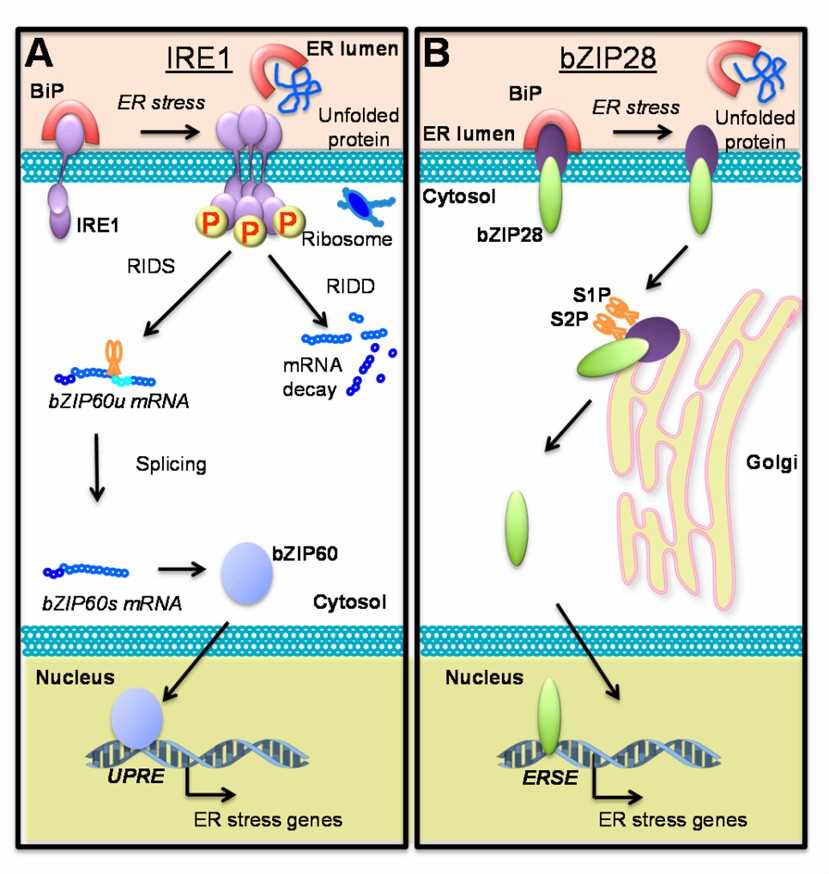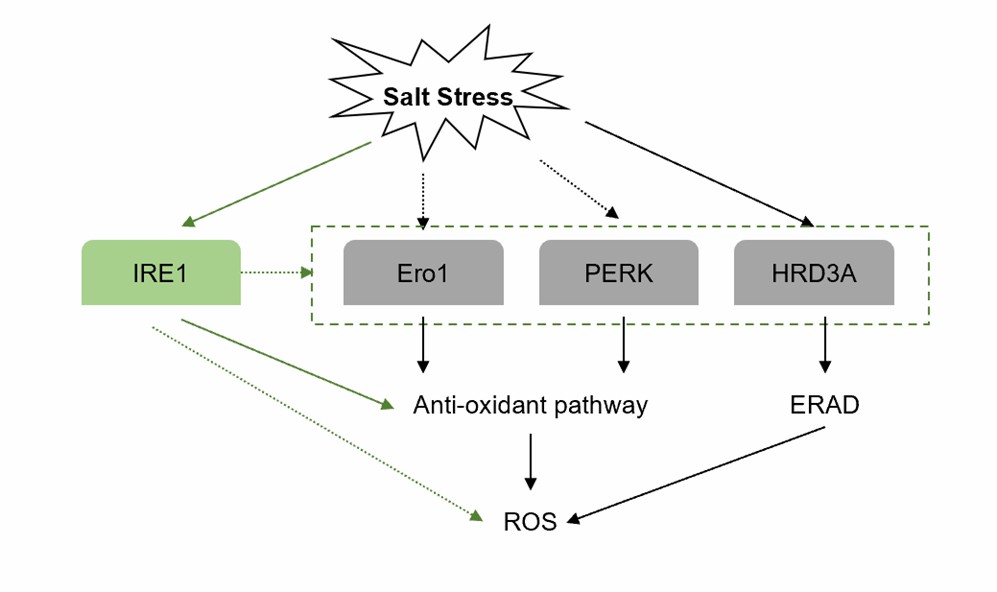Functional Analysis of Endoplasmic Reticulum Stress-Related Genes in Plants
Endoplasmic reticulum (ER) is an important organelle for synthesizing cellular proteins, essential lipids, and complex proteins in organisms. Protein folding in the ER is a random process with a tendency to error, and about 1/3 of newly synthesized proteins are misfolded. Misfolded proteins fold further or enter ER related degradation processes so that the organism reaches homeostasis. However, when ER function is disturbed, it will accumulate unfolded or misfolded proteins in the ER, causing ER stress (ERS).
Lifeasible makes full use of our specialized libraries, selection strategies, and maturation techniques to optimize the stability and performance of plant science. With advanced technology and experienced staff, we provide protocols for functional analysis of plant endoplasmic reticulum stress-related genes to global clients to support their research.
Functional Analysis of bZIP17 / 28
- In plants, the ER membrane stress transduction pathway bZIP17 / 28 edits type II ER membrane protein, which plays a crucial role in responses to salt stress and abscisic acid and brassinolides signaling.
- Under stress conditions, the bZIP17 / 28 forms a functional bZIP transcription factor, which enters the nucleus and induces the expression of stress-related genes.
 Fig.1. Pathways are regulating ER stress responses in Arabidopsis. (Kørner CJ, et al., 2015)
Fig.1. Pathways are regulating ER stress responses in Arabidopsis. (Kørner CJ, et al., 2015)
- Lifeasible provides a protocol for functional analysis of bZIP17 / 28. The services include demonstration that bZIP17 / 28 involves RIP and nuclear relocation of an ER resident protein. In addition, we analyzed expression of stress-related genes following bZIP17 / 28 activation.
Functional Analysis of IRE1
- Under irreversible ER stress, a large number of mRNAs in the secretory pathway encoded by IRE1 are degraded, preventing mRNA translation to reduce the rate of secreted protein production. So, IRE1 is involved in abiotic stress, plant disease resistance, autophagy, and phytohormones.
 Fig.2.The predicted pathway for GhIRE1 to participate in salt stress regulation.
Fig.2.The predicted pathway for GhIRE1 to participate in salt stress regulation.
- From the above points, we design a protocol for the functional analysis of IRE1. Firstly, we conduct a silencing analysis of key genes of endoplasmic reticulum stress through virus-mediated gene silencing technology. Secondly, we perform mRNA splicing detection by RT-PCR and predict the secondary structure of mRNA fragments to prove that the function of IRE1 gene depends on mRNA degradation. Thirdly, we used prokaryotic expression technology to verify whether the IRE1 splicing body can express the protein to exclude the influence of pseudogenes.
Lifeasible offers reliable protocols for functional analysis of plant endoplasmic reticulum stress-related genes to meet your research demands. With years of experience in plant science, our advanced platforms can help our clients solve various difficulties and conduct research. If you are interested in our services or have any questions, please feel free to contact us or make an online inquiry.
Reference
- Kørner CJ, et al. (2015). "Endoplasmic Reticulum Stress Signaling in Plant Immunity--At the Crossroad of Life and Death." Int J Mol Sci. 16(11), 26582-98.
For research or industrial raw materials, not for personal medical use!
 Fig.1. Pathways are regulating ER stress responses in Arabidopsis. (Kørner CJ, et al., 2015)
Fig.1. Pathways are regulating ER stress responses in Arabidopsis. (Kørner CJ, et al., 2015) Fig.2.The predicted pathway for GhIRE1 to participate in salt stress regulation.
Fig.2.The predicted pathway for GhIRE1 to participate in salt stress regulation.